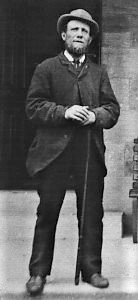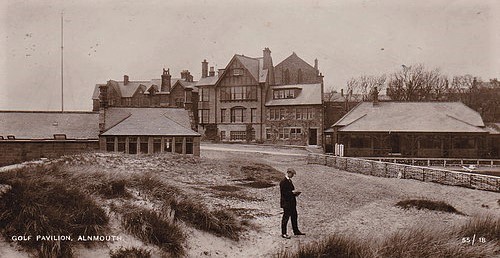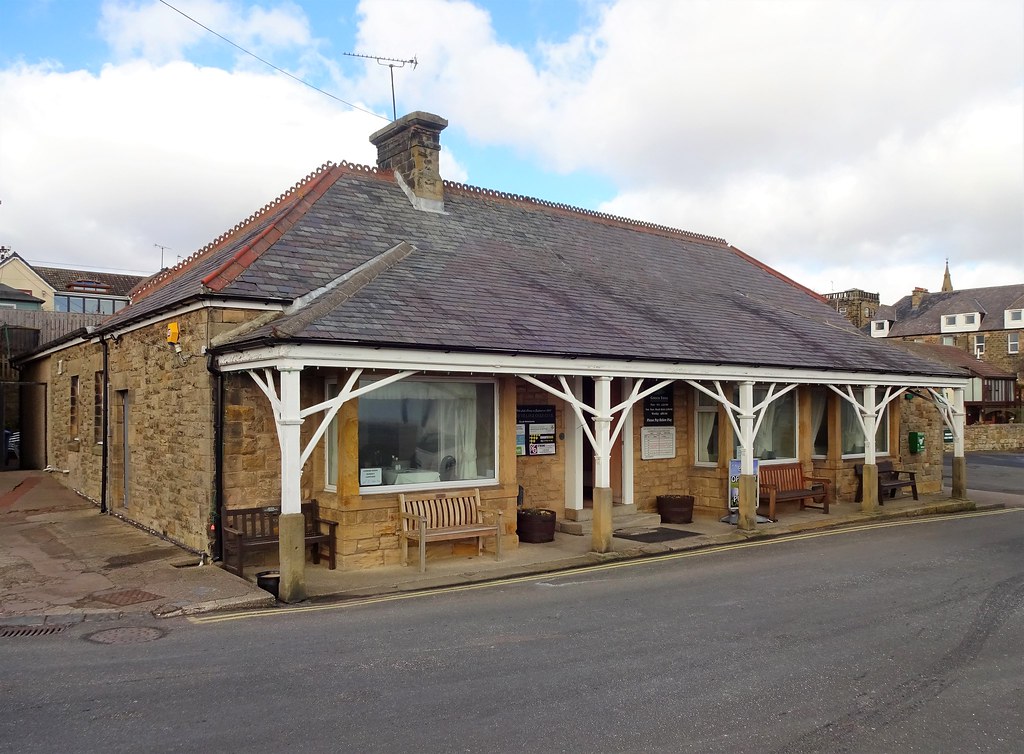The 1874 Open was of historical importance because it was the first time the 9 hole Musselburgh links hosted the event. All eyes were on the high flying duo of an in his prime Young Tom Morris and Willie Park, who already possessed seven Open titles between them. However, it was the ex-seaman and younger brother of Willie Park Sr playing in his first serious golf tournament, Mungo, who carried the day on the back of a 37 & 38, posted over the first two rounds.
The wifi password is a subtle homage to M Park.


While successful, Mungo seems to have been in the shadow of his older brotherís (Willie) success in all aspects of golf, including architecture. This isn't surprising given the fact that Mungo was a fisherman/sailor the first 20 years of his career. True or not, it is fitting that some credit Mungo with the design of the original 9 holes of Alnmouth GC. If Mungo did design the course it was while doing a stint in the navy. What is certain is that Mungo was the first professional for this pocket-size 9 hole links wedged between the winsome village and Alnmouth Bay. Being established in 1869 it is thought this is the oldest 9 hole links in England and the 4th oldest course in England, but let us not use these descriptors as ways to diminish the quality of the course. With lovely terrain and high quality turf, Alnmouth is the real deal.
It is clear the village remains prosperous, being built on the back of its thriving port which in the 17th & 18
th centuries exported large amounts of grain, so much so that there were once 16 granaries in Alnmouth. Many of the granaries are clearly visible today in their converted states. A huge storm in 1806 changed the course of the Aln which effectively cut the village in two. This was the beginning of the end for Alnmouth as a port.
The arrival of the train (still in operation) in the mid 19
th century gave new life to Alnmouth as a holiday destination. Unlike some small ports, Alnmouth has retained much of its original charm and in addition to superb natural amenities, the town offers social amenities such as cricket, rowing, boating, rugby and two golf clubs. This in itself isnít odd until we note that the parish has less than 500 residents! While the links seem a sleepy affair these days, this once was a base of some power in English golf. Alnmouth was one of 24 clubs which controlled the Amateur until the R&A took the reins in 1919. It should also be mentioned that Horace Hutchinson thought Alnmouth important enough to include it in his famous British Golf Links. From the description in the book, it is also clear the current routing and hole numbering is the same at least as far back 1897.
The Boat Club's Ferry Hut.

Rowing Club.

It is easy to confuse the Village Club with the much newer HS Colt designed Alnmouth GC (1931) next door on higher ground. There was certainly holes on the high ground which made up 18 holes combined wigth the links. It seems for a short period Alnmouth GC had two courses, the upper and downer, until the Village Club was formed in 1936 and took over the management of the downer links. This separation of clubs meant some changes had to be made to the links. There used to be a hole called Hill Hole which played to the a green in the current 6th fairway (it was the 6th in 1905 as well). When the clubs split the the Village club kept the 6th and incorporated the old 15th green (a par 3 called Short) to create the current 6th. There was another change. After playing thr 4th there was a walk back on the beach side of the fairway to a wee peninsula tee to play a 262 yard hole over the beach. Of course the tee is now on the hill side of the links and much less dramatic.
1905 map of the 18 hole course

Despite recent interior work, not much about the exterior of the golf pavillion (on the right) has changed since this photo was taken. The once sandy nature of the links is no longer as evident except in as much as the course drains extremely well. The gentleman in the photo is stood near the current 1st tee.



More to follow.
Ciao